Table of Contents
Let’s discuss the 2025 Intel Arrow Lake H hardware platform, with Core Ultra 200H processors.
This hardware combines a complex processor with Intel’s latest cores and technologies and a competent Arc iGPU, arguably the fastest iGPU available today aside from the Radeon graphics in the Strix Halo platform. On top of these, Arrow Lake H supports fast DDR5 or LPDDR5x memory, PCIe gen5 SSDs, WiFi7 and Thunderbolt 5.0, among others.
In a way, this hardware is the beefed-up version of the already popular Lunar Lake V subseries released a few months ago.
Hence, due to its versatile particularities, Arrow Lake H can be integrated either stand-alone in multi-purpose thin-and-light laptops, or alongside a dGPU in a wider range of products, either premium options with the latest Nvidia RTX Blackwell graphics, or mid-sized mid-range models with various types of mid-level RTX graphics.
We’ll go over all these options further down, but first, let’s dig a little more indepth around the design particularities of this subseries of Arrow Lake processors.
Intel Arrow Lake H specs and hardware explained
Arrow Lake H hardware is a hybrid design with Lion Cove Performance Cores and Skymont Efficiency Cores, built on TSMC’s 6 nm N6 node. These are the same cores implemented by the Arrow Lake HX and Lunar Lake V platforms, but in different amounts and with a different overall CPU design.
Unlike on Lunar Lake, all the cores share a common bus-ring and cache memory on Arrow Lake H, and this allows the Skymont Cores to truly showcase their capabilities and overall IPC gains over the previous-gen Crestmont cores implemented with 1st gen Core Ultra H Meteor Lake hardware. That’s why, despite lacking HyperThreading on the P-Cores, Core Ultra 200H processors outmatch their similar-tier 100H predecessors across the board, in both single-threaded and multi-threaded loads – of course, as long as we’re talking similar power levels and cooling, etc.
On the memory side, Arrow Lake H hardware is not a closed SoC design with embedded memory, like Lunar Lake V. Instead, it can be bundled with either LPDRR5x onboard memory on the more portable designs, or supports DDR5 memory through regular DIMM slots in larger or more budget formats. Of course, not having the memory close to the CPU on the same die can impact performance in certain situations, but only in very specific loads.
You might notice in the specs CAMM2 support (Compression Attached Memory Module) for this generation, a potential solution for RAM upgradeability in portable formats, but we’ll see if OEMs actually decide on adopting the format in actual devices. Haven’t seen any so far.
For the GPU, this platform bundles Intel’s Arc 140T, which is a higher-clocked version of the Arc 140V implemented with Lunar Lake, with still 8x 2nd-generation Xe cores. Expect this to perform around 10% faster than the 140V, as long as supplied with enough power.
Overall, while Lunar Lake V hardware does well at 25-30W total power, you’d need more sustained power to squeeze the best possible performance out of a matching Arrow lake H implementation. The Core Ultra 9 285H CPU, in particular, comes with a design TDP customizable from 45 to 115W, while the Core Ultra 7 and 5 SKUs are more intended for mid-powered devices at 28-60 W TDP. Nonetheless, that’s why most available ultrabooks are still built on Lunar Lake V hardware even now in 2025, while Arrow Lake H hardware is offered in more performance-oriented portable designs.
Here’s a quick summary of the more widespread Arrow Lake 200H Core Ultra 9 and Ultra 7 processors and I’ve also included the Lunar Lake 200V Core Ultra 7 and Meteor Lake 100H Ultra 9 for comparison. Just keep in mind that comparing Arrow Lake and Meteor Lake is more complicated than these numbers would suggest, since they are different designs with different generations of cores.
| Core Ultra 9 285H | Core Ultra 7 255H | Core Ultra 258V | Core Ultra 9 185H | |
| Platform | Arrow Lake H | Lunar Lake V | Meteor Lake H | |
| Lithography | TSMC 6N | Intel 7 | ||
| Design TDP | 35-115 W | 20-115 W | 8-37 W | 35-115 W |
| Cores/Threads | 6P+8E+2LPe/16 | 6P+8E+2LPe/16 | 4P+4LPe/8 | 6P+8E+2LPe/22 |
| P-Cores max Turbo | 5.4 GHz | 5.1 GHz | 4.8 GHz | 5.1 GHz |
| E-Cores max Turbo | 4.5 GHz | 4.4 GHz | 3.7 GHz | 3.8 GHz |
| LPE-Cores max Turbo | 2.7 GHz | 2.5 GHz | 2.2 GHz | 2.5 GHz |
| Graphics | Intel Arc 140T, 8 Xe-2 Cores, up to 2.35 GHz, 77 GPU TOPS |
Intel Arc 140T, 8 Xe-2 Cores, up to 2.25 GHz, 74 GPU TOPS |
Intel Arc 140V, 8 Xe-2 Cores, up to 1.95 GHz, 64 GPU TOPS |
Intel Arc, 8 Xe-LPG Cores, up to 2.35 GHz |
| Cache | 24 MB Smart cache | 12 MB Smart cache | 24 MB Smart cache | |
| Memory support |
LPDDR5x-8500, DDR5-6400, up to 128 GB |
LPDDR5x-8533, up to 32 GB onboard |
LPDDR5x-7467, DDR5-5600, up to 96 GB |
|
| AI Engine |
NPU – 13 TOPS Total – 99 TOPS |
NPU – 13 TOPS Total – 96 TOPS |
NPU – 47 TOPS Total – 115 TOPS |
NPU – 11 TOPS Total – ?? |
And this is the complete lineup of Intel Core Ultra 200H processors, including the Ultra 5 version.
Overall, the Core Ultra 9 285H and Core Ultra 7 255H are going to be the CPU options implemented in most retail devices. They’re very much the same, but with higher power design settings for the Core Ultra 9, and slightly faster CPU/GPU clock speeds. For the most part, you probably won’t be able to find both in the same chassis, but if you do, go with the more affordable Ultra 7 version all else considered.
We’ll update this article as we get to test a handful of Arrow Lake H Core Ultra 200H implementations and showcase how these compare to previous-gen Meteor Lake H laptops, but also how they fare against the 2025 AMD Ryzen AI counterparts, either Strix Point or Krackan Point.
—
In the meantime, down below I’ve gathered a complete list of devices built on this hardware, in various formats and with or without dedicated graphics on the side.
List of all laptops built on the Intel Arrow Lake H (Core Ultra 200H) platform
This section lists all the available notebooks built on Arrow Lake Core Ultra 200H hardware.
There are mainly two types of devices, mid-tier thin-and-light laptops in 14 to 16 inch sizes, built exclusively on the Intel CPU/GPU hardware, or all-purpose laptops that combine the Intel Core H processors with Nvidia Graphics, either RTX 4000 for the affordable models or RTX 5000 for the top-tier variants.
Of course, there are many differences in chassis design, power, and cooling, as well as overall features between all these devices. I summarized the important traits in each case, with links to our more detailed articles and reviews where available.
At this point, it’s too early to make informed recommendations on these products, although we do know what to expect from some of them, particularly the hardware refreshes of 2024 designs. Among the portable models, the Acer Swift Go 14 and Asus Zenbook 14 are solid options in their segment of ultraportables, and usually very competitively priced.
At the other end, something like the Asus ROG Zephyrus G16 stands out as a premium all-purpose compact notebook, for work, creator use or even gaming, as it can be specced up to an Ultra 9 with RTX 5090 and vapor-chamber. There aren’t other alternatives with similar capabilities available yet, but I expect some to be announced in due time. Regardless, the Zephyrus G16 will be one of the best options in this premium high-performance segment.
We’re updating the list as it goes. There are a handful of Dell (Dell Pro Max 14/16, Dell Pro Plus 14/16), HP (Omens, ZBooks), and Lenovo (IdeaPad and Yoga Pros, ThinkBooks, ThinkPads), laptops that should be unveiled over the next few weeks, but couldn’t include them here since I don’t have access to all the specs and details.
| Model | Format, Features, Weight | Screen | Hardware and particularities | Battery |
| Acer Aspire Vero 16 | entry-tier laptop, mostly plastic build, 1.8 kg / 4.0 lbs |
16″ IPS, matte, non-touch, 140-hinge |
up to Core Ultra 7 255H, Arc 140T, max 32 GB LPDDR5x RAM, 2x M.2 SSD |
48 Wh |
| Acer Swift Go 14 | mid-tier portable laptop, all-metal build, 1.3 kg / 2.9 lbs |
14″ OLED or IPS, touch or non-touch, 180-hinge |
up to Core Ultra 7 255H, Arc 140T, max 32 GB LPDDR5x RAM, 2x M.2 SSD, up to 45W TDP; dual-fan single-heatsink dual-heatpipe cooling |
54, 65 Wh |
| Acer Swift Go 16 | mid-tier laptop, all-metal build, 1.5 kg / 3.3 lbs |
16″ OLED or IPS, touch or non-touch, 180-hinge |
up to Core Ultra 9 285H, Arc 140T, max 32 GB LPDDR5x RAM, 2x M.2 SSD, up to 45W TDP; dual-fan single-heatsink dual-heatpipe cooling |
53, 65 Wh |
| Asus Vivobook S 16 | mid-tier portable laptop, all-metal build, from 1.5 kg / 3.3 lbs |
16″ OLED, 3K 120Hz, non-touch 180-hinge |
up to Core Ultra 7 255H, Arc 140T, max 32 GB LPDDR5x RAM, 1x M.2 SSD |
75 Wh |
| Asus Vivobook Pro 15 | mid-tier all-around laptop, part-metal build, from 1.8 kg / 4 lbs |
15.6″ OLED, 2.8K 120Hz, non-touch 180-hinge |
Core Ultra 9 285H, up to RTX 4060, up to 125W CPU+GPU, max 40 GB DDR5, onboard + 1x DIMM, 2x M.2 SSD |
75 Wh |
| Asus Zenbook 14 | upper-tier portable laptop, all-metal build, from 1.2 kg / 2.65 lbs |
14″ OLED, 3K 120Hz, touch or non-touch 180-hinge |
up to Core Ultra 9 285H, Arc 140T, max 32 GB LPDDR5x RAM, 1x M.2 SSD, ~30W TDP; single-fan single-heatsink single-heatpipe cooling |
75 Wh |
| Asus Zenbook Duo | dual-display laptop, all-metal build, standalone keyboard folio; from 1.65 kg / 3.65 lbs |
dual 14″ OLED, 2K or 3K 120Hz, touch 180-hinge |
up to Core Ultra 9 285H, Arc 140T, max 32 GB LPDDR5x RAM, 1x M.2 SSD |
75 Wh |
| Asus Zephyrus G16 | premium all-around laptop, all-metal build, RGB keyboard; 6x speakers; from 1.95 kg / 4.3 lbs |
16″ OLED, 2.5K 240Hz, non-touch 130-hinge |
up to Core Ultra 9 285H, RTX 5090 130W, up to 145W CPU+GPU, max 64 GB LPDDR5x RAM, onboard, 2x M.2 SSD, vapor chamber on 5080/5090 models |
90 Wh |
| Dell Pro Max 14 | workstation laptop, all-metal build, from 1.83 kg / 4.05 lbs |
14″ IPS, 2K matte or touch |
up to Core Ultra 7 265H, RTX 500 Pro max 64 GB DDR5x RAM, 2x RAM, 1x M.2 SSD |
72Wh |
| Dell Pro Max 16 | workstation laptop, all-metal build, from 2.2 kg / 4.65 lbs |
16″ IPS, 2K matte or touch |
Core Ultra 9 285H, RTX 2000 Ada max 64 GB DDR5x RAM, 2x RAM, 1x M.2 SSD |
64Wh 96Wh |
| Lenovo IdeaPad Pro 5i 16 | mid-tier all-around laptop, metal build, from 1.9 kg / 4.2 lbs |
16″ OLED, 2.8K 120Hz, touch, 180-hinge |
up to Core Ultra 9 285H, Arc 140T, max 32 GB LPDDR5x RAM, 2x M.2 SSD |
84 Wh |
| Lenovo ThinkBook 16 | mid-tier all-around laptop, metal build, from 1.95 kg / 4.25 lbs |
16″ IPS, 2K or 2.5K 120Hz, matte, 180-hinge |
up to Core Ultra 9 255H, Arc 140T, max 64 GB DDR5 RAM, 2x M.2 SSD |
71 Wh |
| Lenovo Yoga Pro 7i 14 | mid-tier all-around laptop, metal build, from 1.55 kg / 3.4 lbs |
14.5″ OLED, 2.8K 120Hz, touch, 180-hinge |
up to Core Ultra 9 285H, Arc 140T, max 32 GB LPDDR5x RAM, 1x M.2 SSD |
84 Wh |
| Lenovo Yoga Pro 9i 16 | premium all-around laptop, metal build, from 1.95 kg / 4.25 lbs |
16″ Tandem OLED, 3.2K 120Hz, touch, 180-hinge |
up to Core Ultra 9 285H, RTX 5070, max 64 GB LPDDR5x RAM, 1x M.2 SSD |
84 Wh |
| LG Gram 14 | premium ultrabook, all-metal build, from 1.12 kg / 3.47 lbs |
14″ IPS, matte, 2K 60Hz, non-touch |
up to Core Ultra 7 255H, Arc, max 32 GB LPDDR5x RAM, 2x M.2 SSD |
72 Wh |
| LG Gram 16 | premium ultrabook, all-metal build, from 1.4 kg / 3.1 lbs |
14″ IPS, matte, 2.5K 60Hz, touch or non-touch |
up to Core Ultra 7 255H, Arc, max 32 GB LPDDR5x RAM, 2x M.2 SSD |
77 Wh |
| LG Gram Pro 16 2-in-1 | premium 2-in-1 laptop, all-metal build, from 1.4 kg / 3.1 lbs |
16″ OLED, touch, 2.8K 120Hz, 360-hinge |
up to Core Ultra 7 255H, Arc, max 32 GB LPDDR5x RAM, 2x M.2 SSD |
77 Wh |
| LG Gram Pro 17 | premium-tier laptop, all-metal build, 4x speakers, from 1.5 kg / 3.3 lbs |
17″ IPS, matte, 2.5K 144Hz, non-touch, 180-hinge |
up to Core Ultra 7 255H, RTX 4050, max 32 GB LPDDR5x RAM, 2x M.2 SSD |
90 Wh |
| MSI Modern 15 | mid-tier laptop, mostly plastic build, from 1.9 kg / 4.2 lbs |
16″ IPS, matte, non-touch, 180-hinge |
up to Core Ultra 9 285H, Arc 140T, max 32 GB LPDDR5x RAM, 1x M.2 SSD |
39,54 Wh |
| MSI Prestige 13 AI Evo | premium-tier portable laptop, mag-alum build, from 1 kg / 2.2 lbs |
13.3″ OLED, non-touch, 180-hinge |
up to Core Ultra 9 255H, Arc 140T, max 32 GB LPDDR5x RAM, 1x M.2 SSD |
75 Wh |
| MSI Prestige 13 AI Evo | premium-tier portable laptop, mag-alum build, from 1 kg / 2.2 lbs |
13.3″ OLED, 3K 60Hz, non-touch, 180-hinge |
up to Core Ultra 7 255H, Arc 140T, max 32 GB LPDDR5x RAM, 1x M.2 SSD |
75 Wh |
| MSI Prestige 14 AI Evo | mid-tier laptop, aluminum build, from 1.7 kg / 3.8 lbs |
14″ IPS, matte, 2K 144Hz, non-touch, 180-hinge |
up to Core Ultra 7 255H, Arc 140T, max 64 GB DDR5 RAM, 2x slots, 2x M.2 SSD |
90 Wh |
| MSI PrestigePro 14 AI | mid-tier all-around laptop, aluminum build, from 1.7 kg / 3.8 lbs |
14″ IPS, matte, 2K 144Hz, non-touch, 180-hinge |
up to Core Ultra 7 255H, RTX 4050 45W, max 64 GB DDR5 RAM, 2x slots, 2x M.2 SSD |
90 Wh |
| MSI Prestige 16 AI Evo | premium-tier portable laptop, mag-alum build, from 1.5 kg / 3.3 lbs |
16″ OLED, 4K 60Hz, non-touch, 180-hinge |
up to Core Ultra 7 255H, Arc 140T, max 32 GB LPDDR5x RAM, 2x M.2 SSD |
99 Wh |
| MSI PrestigePro 16 AI | premium-tier portable laptop, mag-alum build, from 1.6 kg / 3.5 lbs |
16″ OLED, 4K 60Hz, non-touch, 180-hinge |
up to Core Ultra 7 255H, RTX 4050 55W, max 32 GB LPDDR5x RAM, 2x M.2 SSD |
99 Wh |
| MSI Prestige 16 AI Evo | premium-tier portable laptop, mag-alum build, from 1.5 kg / 3.3 lbs |
16″ OLED, 4K 60Hz, non-touch, 180-hinge |
up to Core Ultra 7 255H, Arc 140T, max 32 GB LPDDR5x RAM, 2x M.2 SSD |
99 Wh |
| MSI Summit 13 AI Evo | mid-tier 2-in-1 laptop, aluminum build, from 1.35 kg / 3 lbs |
13.3″ IPS, 2K 60Hz, touch, 360-hinge |
up to Core Ultra 7 255H, Arc 140T, max 32 GB LPDDR5x RAM, 1x M.2 SSD |
70 Wh |
| MSI Summit 16 AI Evo | mid-tier 2-in-1 laptop, aluminum build, from 2.1 kg / 4.6 lbs |
16″ IPS, 2.5K 165Hz, touch, 360-hinge |
up to Core Ultra 7 255H, Arc 140T, max 32 GB LPDDR5x RAM, 1x M.2 SSD |
82 Wh |
| MSI SummitPro 16 AI | mid-tier 2-in-1 laptop, aluminum build, from 2.1 kg / 4.6 lbs |
16″ IPS, 2.5K 165Hz, touch, 360-hinge |
up to Core Ultra 7 255H, RTX 4050 45W, max 32 GB LPDDR5x RAM, 1x M.2 SSD |
82 Wh |
That’s about it for this article.
It’s a work in progress, though, and we’ll update it as new devices with Intel Arrow Lake-H Core Ultra 200H hardware are released, or once we get to review some of these.
At this point, I’d appreciate if you’d share your thoughts on this Intel platform in the comments section below. And if you find any laptop that should be listed in this article and isn’t yet, please let me know about it.

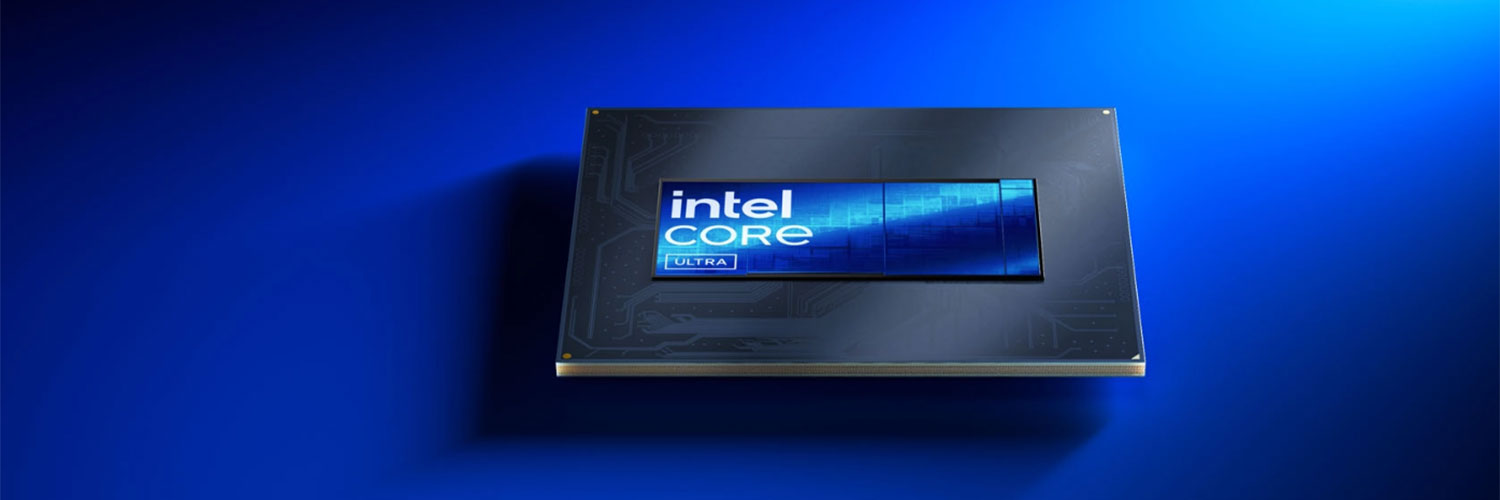
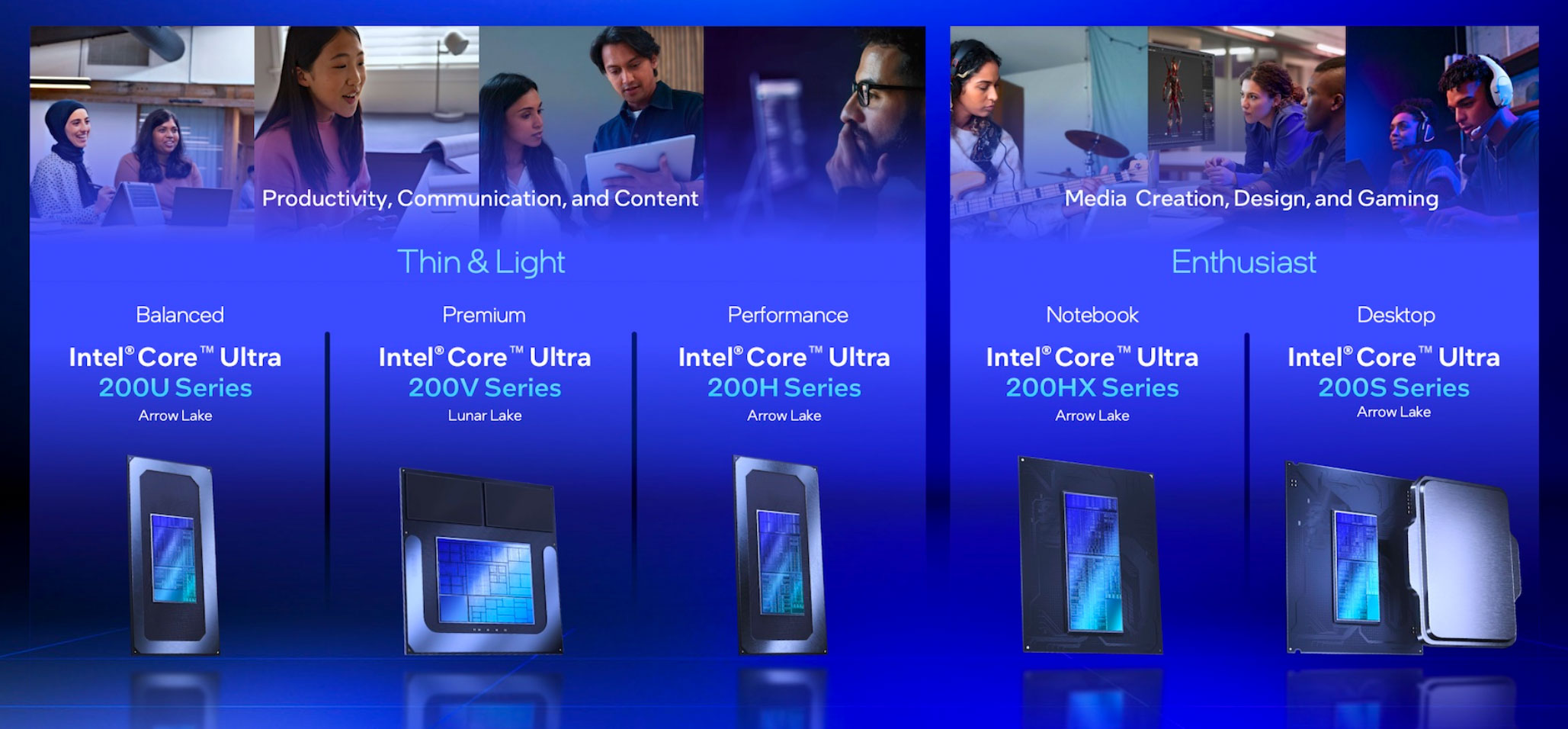
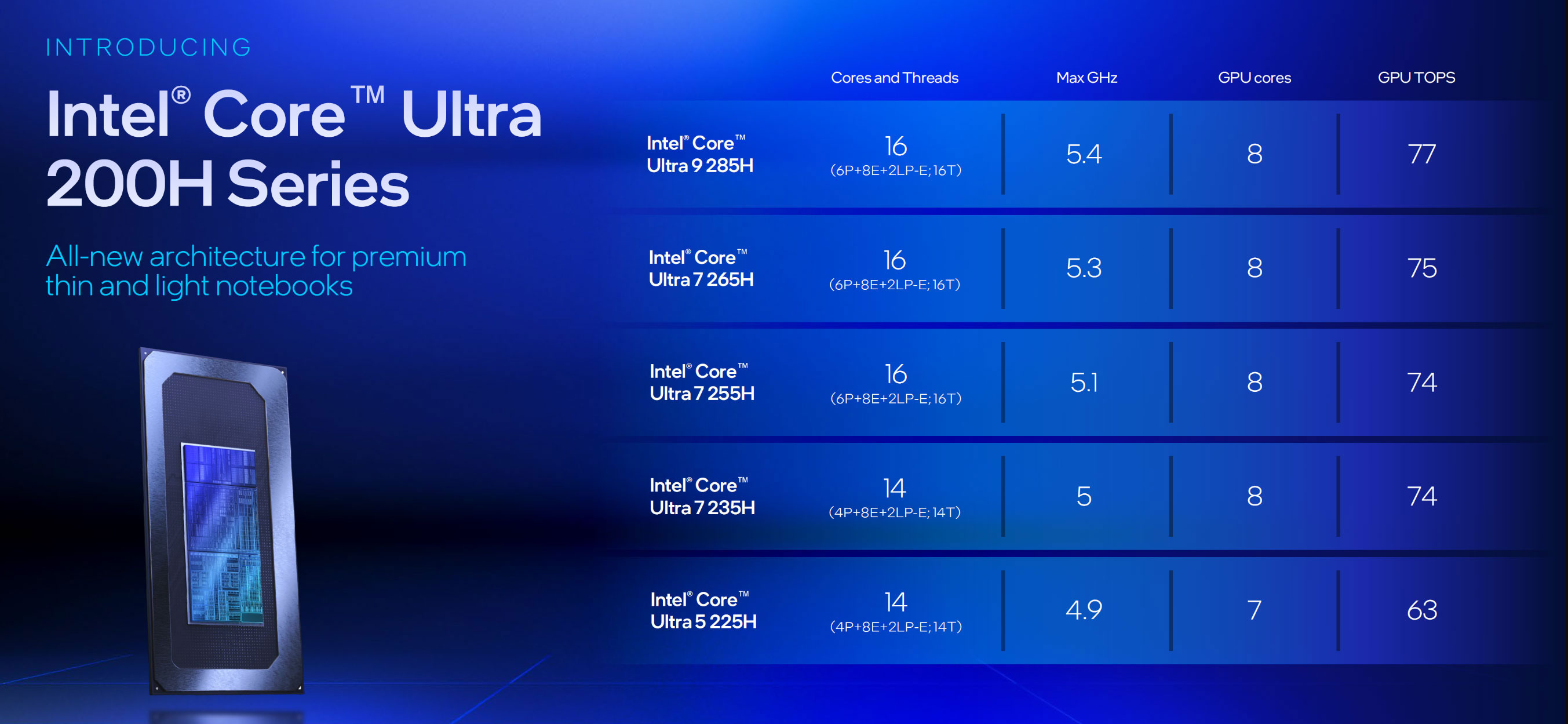
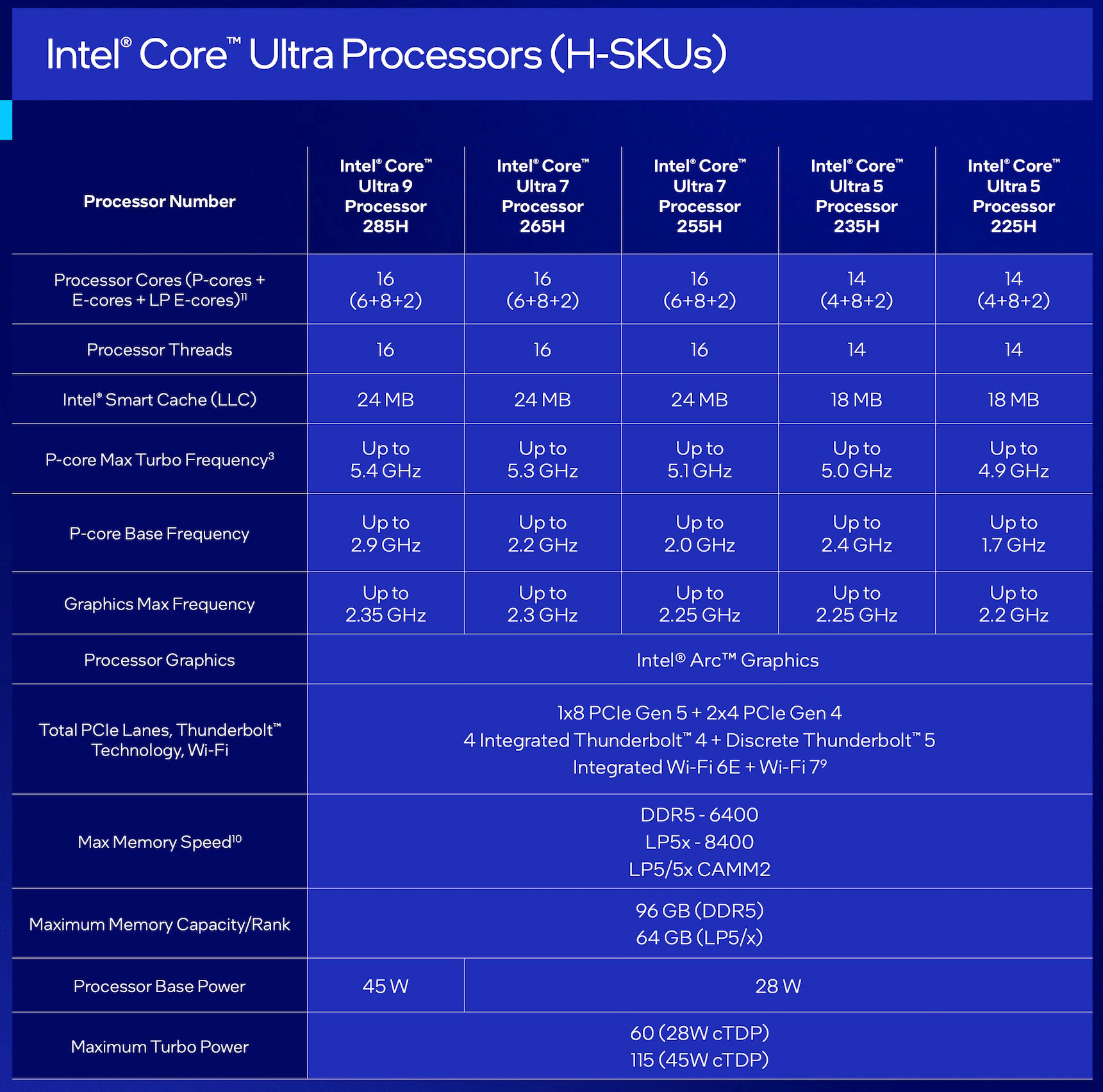

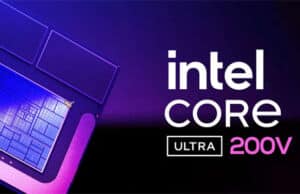
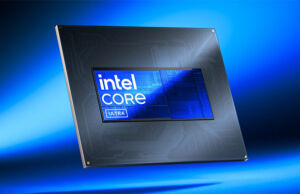

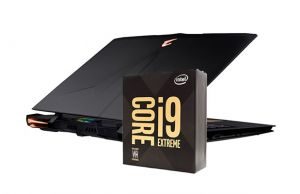
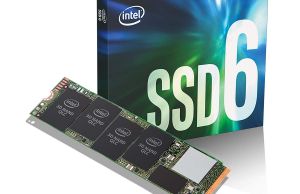
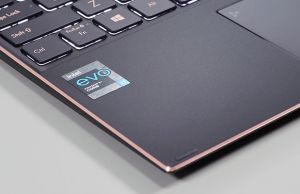

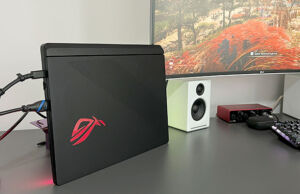

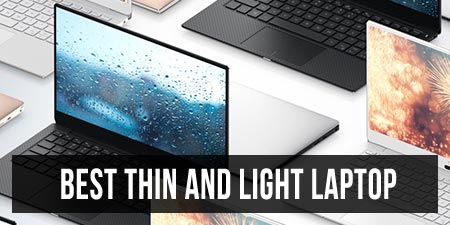
will blake
January 30, 2025 at 8:37 pm
So 9 is a better binned 7, 3% difference in performance or something. i love(not) this type of marketing. Both AMD and Intel does that all the time. Poor customers.
will blake
February 4, 2025 at 6:43 pm
From what i saw in some chinese review, not impressed. Zen 5 performance/power curve looks much better, let's wait for confirmation.
NikoB
February 11, 2025 at 2:36 pm
The first tests of real laptops with 285H have already come out – a complete rout from AMD even with the less performance series – Zen5 Strix Point. The memory is much slower than that of Zen5 Strix Point, catastrophically slower than that of Zen5 Halo. And the difference in multi-threaded performance reaches 37% vs AI 9 370HX at 15W PL1(SPL for AMD), at 55W the difference is 10-11% in favor of AMD.
This once again proved that Intel has completely lost human capital in the x86 chip development division. Therefore, those who want the foundry division to be separated from Intel are right, and x86 is already completely losing to AMD, having access to a better TSMC process technology than AMD with Zen5…
NikoB
February 11, 2025 at 2:47 pm
By the way, the 140T integrated graphics card also completely lost to the 2-year-old Zen4 Phoenix, in games where it is impossible to use fraudulent methods like DLSS and other options for fake frame extrapolation. In the same GTA V, the 140T at PL1=35-45W(MSI/Asus real laptops) shows a shameful 41-43fps, while the 2-year-old 7940HS at about the same SPL produces 63fps at High settings in 1080p. This is a complete rout of Intel, which even switched to TSMC to its shame. Although, despite all these successes, investors have been selling AMD shares for a year now, which shows that they understand that AMD will have a hard time with the restoration of Intel's leadership in technological processes by 2027. Investors are pragmatic people. But for now, AMD is on top, but for some reason it simply does not want to produce processors in the same quantities as Intel. It was 5:1 and will remain so by 2025. And this was AMD's only chance for the last 7 years – to occupy the market bottom of Intel, pushing it to the periphery of the market with a 20% residual share, which it never took advantage of. We all waited for mass laptops on Zen4 Phoenix (the right models), but they never appeared on the market, especially in the business segment and universal models…
Andrei Girbea
February 11, 2025 at 4:27 pm
I wouldn't jump on conclusions yet. 0day drivers have been problematic, I'm still working on my review of the 285H platform because the latest Intel drivers deliver negatively skewed results, while older Intel drivers work better.
I haven't tested GTA 5, but in the games I've tested, results are minimally better than 140V and better than Radeon 890M,880M and 780M across the board. Not by much, since the 140T is just a slightly higher clocked 140V, so expectations should be kept realistic.
NikoB
February 12, 2025 at 4:00 pm
New igpu from Intel, give "high" fps only when using the latest schemes of generating fake frames by various sophisticated methods. The basis of which is only one thing – imagining what does not exist in real frame rendering. All old games do not use these fake frame generation technologies. Moreover, all igpu in new models are still not able to give 60 fps in modern games, only in relatively old ones even with frame generators. And even if people play on such, then in old games that do not use fake frame generators, like GTA V, an extremely resource-intensive game. Games like GTA V just show pure 3D performance without frame generators. And here the new igpu Intel to the shame of its team (despite the fact that the datasheet proudly states that the TSMC 3NB process technology is used, which is better than the Zen4/5 process technology) completely lose to the "4/5nm" Zen4 Phoenix from 2 years ago and have no chance at all against the igpu Zen5. And even less so against the 8060S Zen5 Halo.
NikoB
February 12, 2025 at 4:11 pm
The point is that even the newest 5090 are poorly suited for generating an honest picture in 4k, they are frankly weak for the latest releases and requirements of game engines. Not to mention the transition to "analog" picture, which I have been dreaming about for more than 10 years, as soon as it became possible to support 4:4:4 8k@60fps at least in discrete cards (but really you need at least 120Hz in 2D, even for smooth scrolling in Word!) with 30-36 bit color and the market became ready for 8k panels. But this did not happen even in 2D. Only the latest Arrow Lake and Zen5 Halo chips finally support DP2.0+/UHBR20 at the integrated level (which is already morally obsolete for as much as 5 years, like HDMI 2.2!). And what prevented NVidia/AMD from supporting it since 2020 in dgpu – accelerating the transition to 8k monitors at least outside of games with perfectly clear fonts and almost analog picture? After all, the VRAM bandwidth was significantly higher than that of Zen5 Halo even 10 years ago! And the problem is precisely in the bandwidth of the x86 RAM – it is monstrously low compared to the performance of cores even 10 years ago. They are actually limited by this RAM bandwidth. And it is obvious that supporting 8k resolution even in 2D mode by the 128-bit Arrow Lake memory controller will be a much more difficult task than for the 256 memory controller of Zen5 Halo.
And all this has been holding back and is holding back the mass distribution of 8K monitors – almost ideal for the human eye on diagonals up to 32" due to the elimination of refocusing problems (and nervous system fatigue) from the pixel structure of the picture to its object essence and back. Starting from about 250 ppi, this problem is practically solvable at any position of the head from the screen at distances from 25 cm…
By the way, yesterday there was interesting news confirming that IT hardware manufacturers were forced to forcibly begin to restrain consumption (but not crazy NVidia aimed at the same crazy game fanatics) in processors from 2024 – https://www.cpubenchmark.net/year-on-year.html
That very obvious "plateau" has begun, which I have warned about many times. Each next step in technical processes, in silicon, will be more and more expensive and more and more meaningless from the point of view of the "exhaust" in performance per 1 W. Humanity is approaching silicon dead end and does not know what to do next. Another funny news – according to analysts' forecasts, the consumption of data centers for "AI" tasks will exceed the capabilities of energy companies in different countries. Again – silicon dead end. And semi-laboratory quantum processors in the next 40-50 years will not help to get out of it. We are witnessing the end of an entire era and ahead there are only horizontal improvements (optimization and improvement of software), but not vertical ones – hardware. Another 10 years and the silicon dead end will become clear to everyone on the planet. And this will further strengthen the trend for introducing artificial aging elements into hardware and software, so that they will come for a new one after the interval needed by manufacturers. After all, from the point of view of performance, this is already a meaningless upgrade for the mass consumer. And look how the connectors and cables on the 5090 with its monstrous 575 W melt and heat up even for game fanatics who are ready to take anything with any tricks …
NikoB
February 12, 2025 at 4:42 pm
And as I have already noted several times before, the sector of monitors and laptop matrices is entering a new era of image degradation in terms of eye safety (nervous system), with the mass consumer being forced to switch to AM (OLED). They simply do not meet the minimum PWM frequency of 1.25 kHz, especially at brightness values of less than 50% (in absolute scale), where monitors and laptops are most often used. We are again being forced to use flickering panels, increasingly glossy (also extremely harmful for long-term operation) and fading much faster. You probably remember the scandal with AM (OLED) monitors, after which manufacturers were forced to raise the warranty on them to the standard 3 years. But let me remind you that even monitors with CCFL backlighting had a resource of at least 40k hours (for example, my old monitor with 94% AdobeRGB color coverage has burned 46k+ hours and is still bright – I have never even used brightness higher than 0% on it, and the contrast is at 30% – this is enough even during the day (with sunlight in the room, I can temporarily set 50-55% contrast), and in total it produces 350 nits even after 45k hours with 100% brightness and contrast controls!), and AM (OLED) has a resource several times lower. And this will undoubtedly affect the long-term use of buyers of such models – they will somehow work out 3 warranty years, and what next? With their accelerated burnout? These are not smartphones, where the screen use time is several times lower than for professional, work purposes, where screens with a static picture burn for 8-12 hours a day. IPS/VA easily cope with this task with CCFL and LED backlighting, but not AM(OLED). Manufacturers of AM(OLED) panels after a storm of criticism due to the low PWM frequency, over the past 2 years have raised it, if you believe the reviews, to 480 Hz, which is still 2.5 times lower than the minimum threshold recommended by the standard. And almost all IPS/VA have a minimum PWM frequency (at minimum brightness) in the region of 1.5-2 kHz. It is no longer possible to buy a smartphone with a good IPS screen and at the same time 4k@60fps video recording, not to mention 8k. And now they are starting to twist our arms in monitors and laptop panels by transferring mass models only to the lousy AM(OLED) which is only good for dynamic pictures – video and games, today. But the consequences of the impossibility of choosing for work tasks can lead to extremely sad consequences and again in terms of the desire of buyers oriented towards work tasks – they simply will not want to buy new monitors and laptops with AM (OLED), until all their problems and eye safety are completely solved.
People, especially with work tasks, will increasingly insist on upgrading (although money is not a problem for them) to new hardware and will try to continue using the old one until complete physical wear and tear with various tricks to avoid pressure with artificial aging – like forced transfer to W11-12, etc.
Over the past few years, I have never seen good universal laptop models from any manufacturer.
And as I wrote earlier, there are simply no 18" models with 4K 120Hz panels without dgpu – and this is an ideal replacement for desktops at home (which still consume many times more in idle mode and require a separate UPS of enormous power for at least 3-4 hours) and in the office. With a normal full-fledged keyboard (classic numpad), a full set of ports (squeezing everything out of the SoC to the maximum!) and their comfortable location for both right-handed and left-handed users in any usage situations. With the correct weight of radiators and large coolers at low speeds, sufficient for virtually silent operation (like on desktops) in work tasks.
And again, Zen5 Halo is a strange SoC – with a strange pci-e 4.0 on 16 lines. It seems that it is not for games (since 4.0, and 5xxx line NVidia 5.0), but also from the point of view of a universal powerful work laptop with maximum expansion capabilities, including external peripherals, it is also not very suitable for the 4.0 bus. AMD seems to be saying – if you want a portable workstation – look at our server processors, which are several times more expensive…
And these are clearly not the good trends that contributed to the spread of good hardware among the same students and mass creativity and the increase in startups. The world is literally being turned against positive progress even at the level of mass hardware…
Eric
March 3, 2025 at 8:13 am
Hello,
I've been deciding between the LG Gram Pro 16 and Thinkpad X9 15 inch (I have both in hand!), both running on the 258V, leaning towards the X9 by a slight margin (I even created my own scoring matrix!). One area that the Thinkpad wins in is screen quality for media consumption due to being OLED vs. the Gram being and LCD panel.
However, I just saw that there is a 2025 LG Gram Pro 16 with an OLED screen available that is outfitted with a 255H processor. Now I am wondering how the battery life of this 255H model will stack up against the 258V one given the differences in processor and screen (the battery sizes are the same). In general, how much more efficient do you expect the 258V to be over the 255H if most other factors are held constant. I know that the 255H model won't be able to keep up with the 258V, but as long as its providing "all-day plus" battery life, let's say in the 12 hour range, perhaps it'll be worth the trade in terms of performance + screen for battery. I'm typically running Google/Microsoft productivity suite apps from a browser but every once in a while run some heavier applications. Weight is also a big factor for me as I often walk around from room to room with my laptop at work – this is a big reason why I've hesitated to move on from the Gram, since it's almost 0.5 lbs lighter than the X9 and has that "wow" factor.
Thanks in advance for any insights you can provide!
Andrei Girbea
March 4, 2025 at 5:01 pm
Hard to say at this point. I've only tested a single 285H and no 255H.
The two platforms use similar cores, but a different overall design, so I'd say the 200V processors should keep an advantage in efficiency. You can find some numbers in my review of the Zenbook Duo with the 285H, and perhaps then go through other reviews as well.
Evan
March 6, 2025 at 7:59 am
On Amazon, they have the duo with the ultra 7 255H and ultra 9 285H for the same price. Which would you pick?
Andrei Girbea
March 7, 2025 at 11:53 am
either, but generally the 255H should be cheaper. if same price, then no reason not to get the 285H
Alex
May 6, 2025 at 5:31 am
Hey Andrei, care to update the list with more manufacturers who have released laptops using 255H and 285H? For example, LG released same astonishingly light laptops with 255H – both 2in1 and laptops, both in 16" and 17".
If you tested ay 255H laptops by now, what can you say in terms of fans kicking in vsersus the 256V or 258V when doing light work (only browsing and office apps)? I have been using the Thinkpad X9-15 with a 258V processor and fans barely kick in at all in that regime. If the 255H is the same then I'd go for it as I do video editing as well and the GPU performance is considerably better on the 255H vs 258V as far as I've seen.
p.s. Salutari si multumiri pt eforturi si rigurozitate!